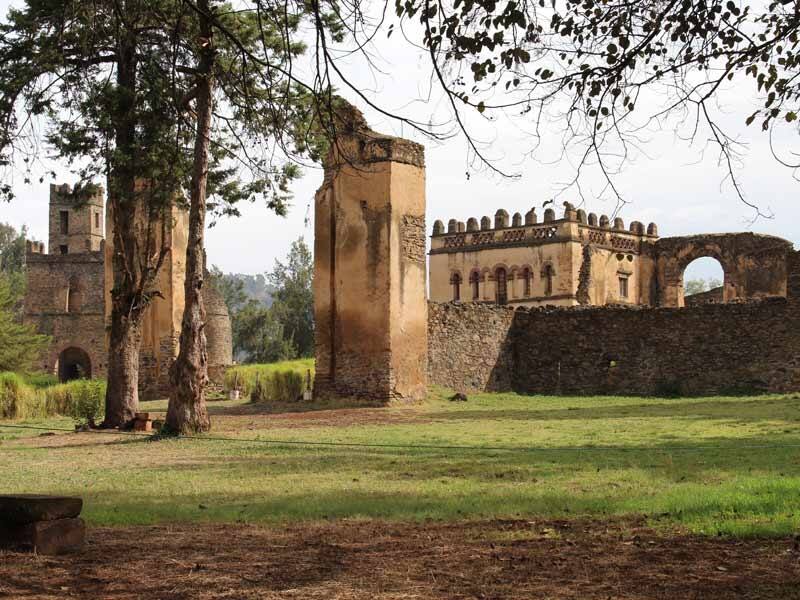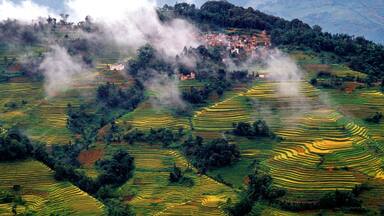Safeguarding sites for sustainable development in Ethiopia
UNESCO Sites are symbols of our work in support of sustainable development. The international community helps us ensure these sites, of outstanding universal value, function as models of heritage conservation and sustainable human living. In Ethiopia, UNESCO's work includes developing integrated management plans for sites such as Simien Mountains National Park, the Castles of Gondar, and Lake Tana. They highlight our unique, integrated and transdisciplinary approach - encompassing education, culture, and science - to improve the lives of locals, and alleviate poverty, notably through the promotion of sustainable tourism and cultural heritage.
But what is the link between Culture, Science, and Sustainable Development? How can this link ensure integrated management plans for UNESCO World Heritage Sites and Biosphere Reserves in Africa at large that function as examples of heritage conservation and sustainable human living while supporting environmentally friendly and culturally responsible tourism? And how can UNESCO’s ongoing work in Ethiopia, in partnership with other UN agencies, development programmes, and national counterparts, serve as a model for reflection on ways forward in this regard?
These questions, among others, were at the heart of the pre-planning excursion undertaken in early May 2014 in preparation for a Continental Conference on UNESCO Sites in Africa foreseen in Bahir Dar, Ethiopia, in November 2015 in order to enhance the functioning, visibility, information exchange, partnerships, and impact of UNESCO sites across the Continent. The pre-planning excursion, organized by UNESCO’s Liaison Office to the African Union and Economic Commission for Africa in Addis Ababa, included experts from the Ministry of Culture and Tourism, the Ethiopian Wildlife Conservation Authority, the Ethiopian Tourism Organization, FAO, UNDP, JICA, NABU, the development arm of the Ethiopian Orthodox Church, the Culture Tourism and Park Development Bureau, the Amhara Regional State President’s Office, and Gondar University. The excursion allowed for an exchange of information, on-site discussions of issues, and the pro-active formation of multi-stakeholder partnerships in support of sustainable development and site management.
The planned UNESCO Biosphere Reserve of Lake Tana – the source of the Blue Nile - as well as the UNESCO World Heritage Sites Simien Mountains National Park and the Castles of Gondar were visited by the team. Further work in support of sustainable development was discussed during the excursion, including the establishment of a Green School in Bahir Dar, the importance of church forests for the in-situ conservation of indigenous Ethiopian tree species at Lake Tana, and environmentally friendly and culturally responsible tourism development at Lake Tana and in Simien Mountains National Park. In this context, best practices for land use, reduction of soil erosion, reforestation, enhancement of biodiversity conservation, and climate change resilience were shared between UN agencies, national development programmes, and Ethiopian counterparts.
The pre-planning excursion underlined the need for UNESCO sites to function as models of heritage conservation and sustainable human living, in symbiosis with nature conservation and sustainable development. This necessitates further support from Governmental authorities, UN agencies, the private sector, the public, as well as the African Union, UNECA, and donors. To this end, UNESCO and the Ethiopian UNESCO Man and the Biosphere National Committee have recently enhanced their capacity and focus on Biosphere Reserve Development in Ethiopia. This is based on numerous bilateral and multi-stakeholder discussions that took place between August 2013 and April 2014. As a result of ongoing conversations, it emerged that all the ingredients for effective UNESCO site management are available, including knowledge and expertise; however, better coordination and increased synergies are needed to ensure better and sustainable results. This is true not only for the Simien Mountains and Lake Tana, but for Ethiopia’s potential Sites and UNESCO Sites across the Continent at large.
In concluding the pre-planning excursion, it was determined that increased synergy and coordination among all stakeholders will be essential to strengthen the professional identification, establishment, management, and functioning of UNESCO Sites. The continental conference foreseen in November 2015 in Bahir Dar will ensure an exchange of best practices and encourage south-south cooperation across countries and agencies to further develop integrated management plans of UNESCO Sites.

